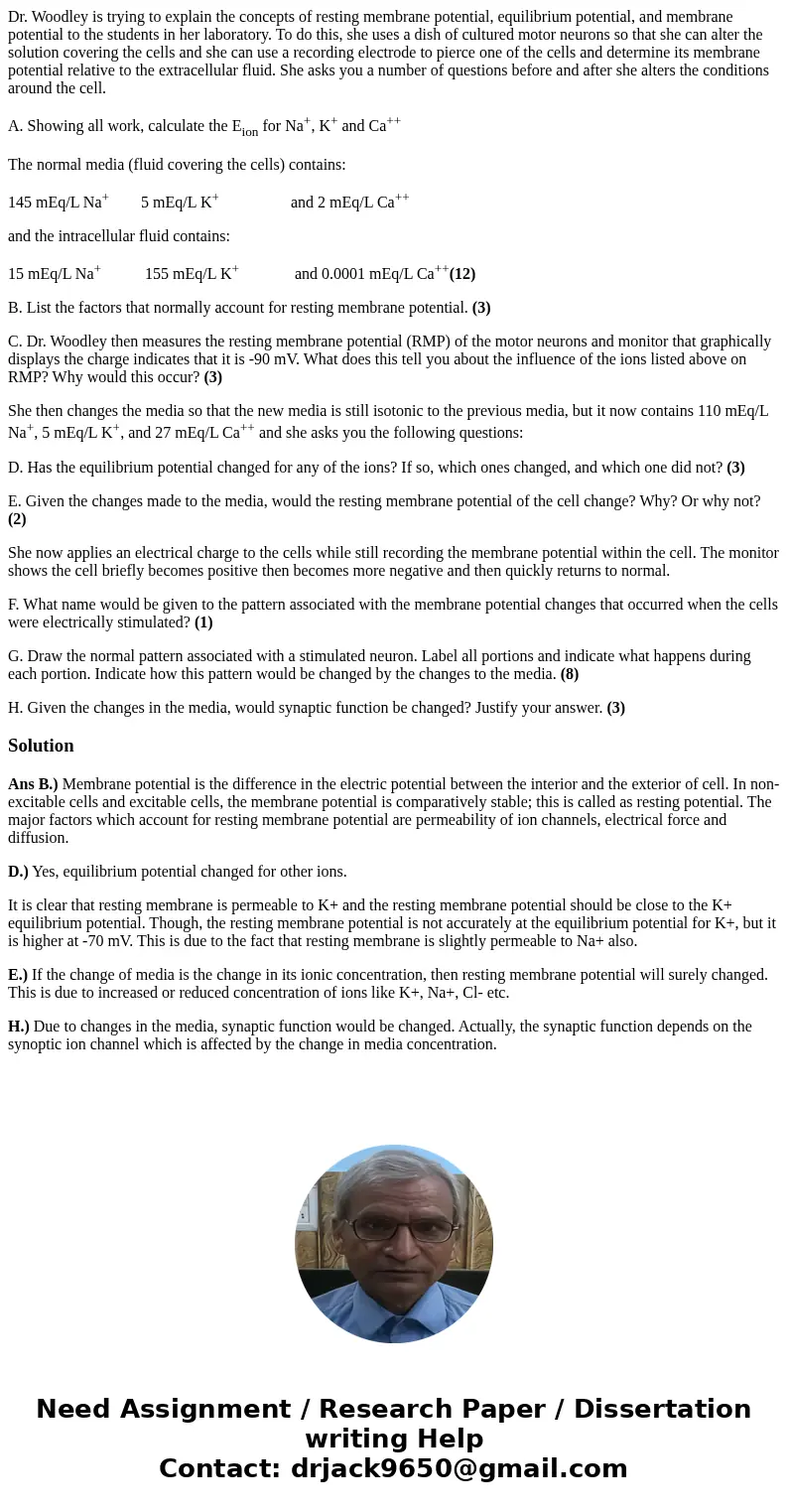Dr Woodley is trying to explain the concepts of resting memb
Dr. Woodley is trying to explain the concepts of resting membrane potential, equilibrium potential, and membrane potential to the students in her laboratory. To do this, she uses a dish of cultured motor neurons so that she can alter the solution covering the cells and she can use a recording electrode to pierce one of the cells and determine its membrane potential relative to the extracellular fluid. She asks you a number of questions before and after she alters the conditions around the cell.
A. Showing all work, calculate the Eion for Na+, K+ and Ca++
The normal media (fluid covering the cells) contains:
145 mEq/L Na+ 5 mEq/L K+ and 2 mEq/L Ca++
and the intracellular fluid contains:
15 mEq/L Na+ 155 mEq/L K+ and 0.0001 mEq/L Ca++(12)
B. List the factors that normally account for resting membrane potential. (3)
C. Dr. Woodley then measures the resting membrane potential (RMP) of the motor neurons and monitor that graphically displays the charge indicates that it is -90 mV. What does this tell you about the influence of the ions listed above on RMP? Why would this occur? (3)
She then changes the media so that the new media is still isotonic to the previous media, but it now contains 110 mEq/L Na+, 5 mEq/L K+, and 27 mEq/L Ca++ and she asks you the following questions:
D. Has the equilibrium potential changed for any of the ions? If so, which ones changed, and which one did not? (3)
E. Given the changes made to the media, would the resting membrane potential of the cell change? Why? Or why not? (2)
She now applies an electrical charge to the cells while still recording the membrane potential within the cell. The monitor shows the cell briefly becomes positive then becomes more negative and then quickly returns to normal.
F. What name would be given to the pattern associated with the membrane potential changes that occurred when the cells were electrically stimulated? (1)
G. Draw the normal pattern associated with a stimulated neuron. Label all portions and indicate what happens during each portion. Indicate how this pattern would be changed by the changes to the media. (8)
H. Given the changes in the media, would synaptic function be changed? Justify your answer. (3)
Solution
Ans B.) Membrane potential is the difference in the electric potential between the interior and the exterior of cell. In non-excitable cells and excitable cells, the membrane potential is comparatively stable; this is called as resting potential. The major factors which account for resting membrane potential are permeability of ion channels, electrical force and diffusion.
D.) Yes, equilibrium potential changed for other ions.
It is clear that resting membrane is permeable to K+ and the resting membrane potential should be close to the K+ equilibrium potential. Though, the resting membrane potential is not accurately at the equilibrium potential for K+, but it is higher at -70 mV. This is due to the fact that resting membrane is slightly permeable to Na+ also.
E.) If the change of media is the change in its ionic concentration, then resting membrane potential will surely changed. This is due to increased or reduced concentration of ions like K+, Na+, Cl- etc.
H.) Due to changes in the media, synaptic function would be changed. Actually, the synaptic function depends on the synoptic ion channel which is affected by the change in media concentration.

 Homework Sourse
Homework Sourse